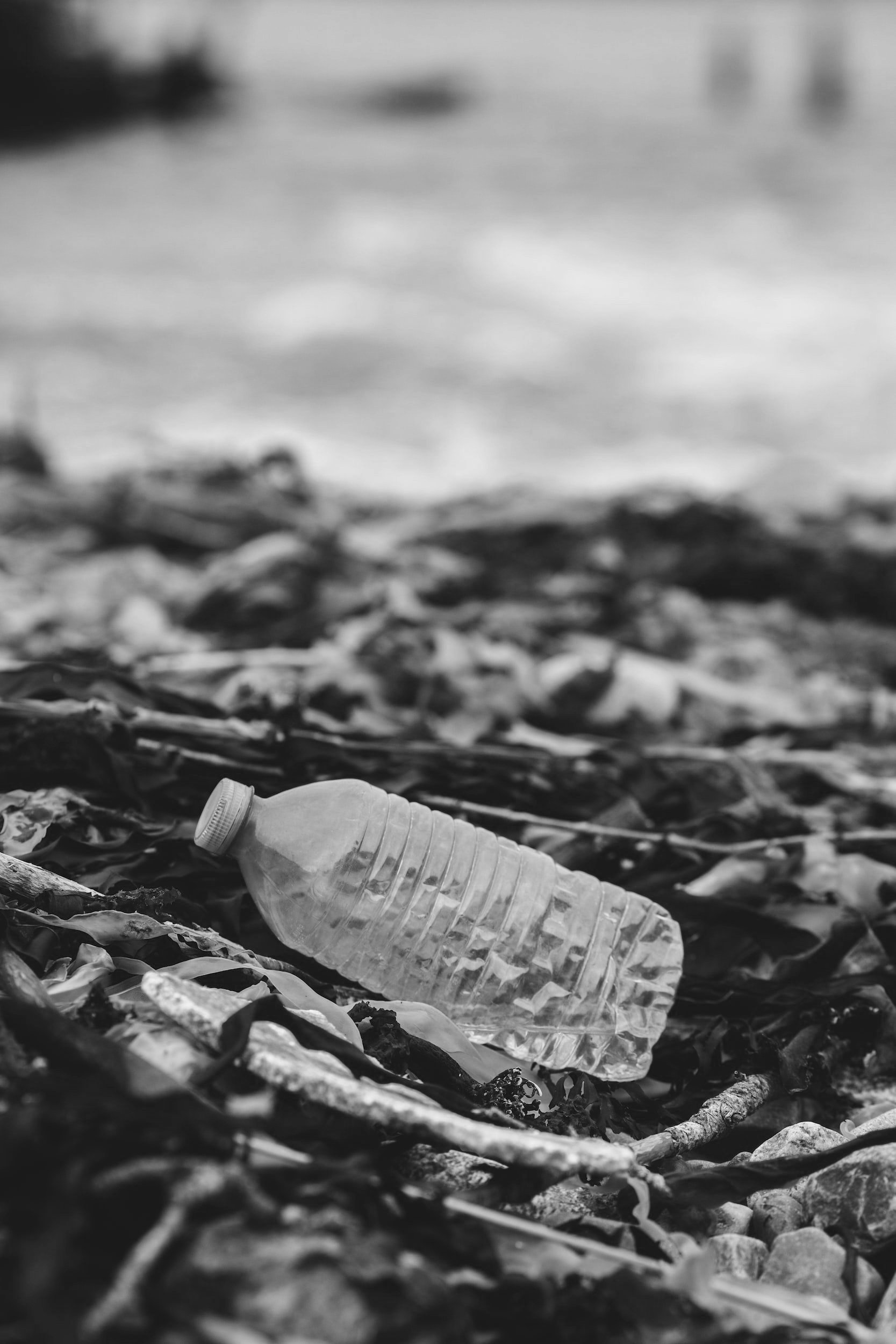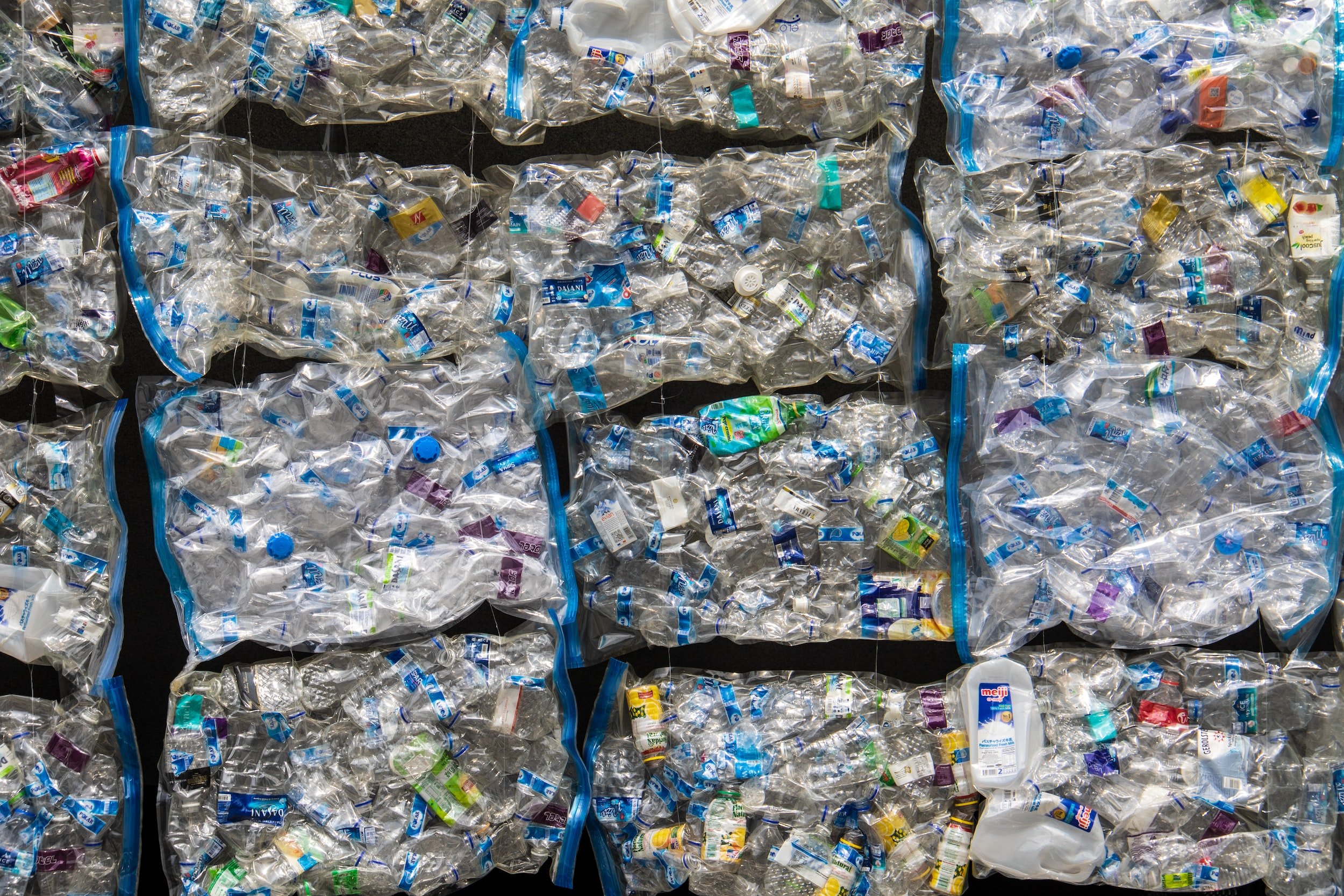Why should we bother making fabrics from plastic bottles?
Did you know that humans use about 1.2 million plastic bottles per minute in total? According to EARTHDAY.ORG, Americans purchase about 50 billion plastic water bottles annually. This averages to about 13 bottles per month for every person in the U.S.. These numbers are daunting! Especially if you consider the number of plastic bottles that don’t make it to recycling facilities.
Plastic bottles that don’t make it to recycling facilities end up in landfills. These bottles, along with the many single-use plastics that we dispose of daily, slowly break down into tiny pieces of plastic called microplastics. These microplastics are toxic. They contaminate our soil and waterways, and they adversely affect the health of humans and animals.
Eventually, microplastics enter the food chain when humans and animals unknowingly ingest them. It has been proven by researchers that microplastics can easily pass the gut barrier and find their way through the body once in the bloodstream. The Plastic Health Coalition states, “Researchers have hypothesized that human exposure to microplastics could lead to oxidative stress, DNA damage and inflammation, among other health problems.”
For the future health of our environment and our bodies, it is important that plastic bottles find their way to recycling facilities to be made into something new. Many brands in the fashion industry share the same sentiment. Patagonia, one of biggest outdoor clothing brands, has been using recycled polyester made from plastic bottles since the 1990s.
How do plastic bottles get turned into recycled fiber?
In countries like Taiwan, there are government-regulated recycling facilities that collect post-consumer plastic water bottles (also known as PET bottles). The collected PET bottles are washed, chopped, and ground into small flakes. Those flakes are then melted using a common technique called mechanical recycling. Once melted, the material is extruded though tiny openings in a spinneret (Imagine Play-Doh being squeeeeezed through an extruder!). So, the melted material enters a machine at one end and a long filament exits at the other. This long filament is the fiber that gets spun into yarn!
How can brands source fiber made from recycled plastic bottles?
Fashion brands who plan to design clothing with fabrics made from recycled water bottles have 2 options. One option is to purchase yarn already on the market. REPREVE, developed by Unifi, is the world’s leading fiber made from recycled PET bottles. Unifi fabrics made with REPREVE can be purchased from select wholesalers. Another option is to source fiber directly from government-regulated recycling facilities. The sustainable women’s clothing brand, Girlfriend Collective, sources recycled fiber from a facility in Taiwan. They have this fiber spun into yarn at a separate facility.
Additional resources for you to explore:
https://www.earthday.org/fact-sheet-single-use-plastics/
https://www.plastichealthcoalition.org/microplastics/
https://www.thezoereport.com/fashion/clothing-made-from-recycled-plastic-bottles-safe
https://www.patagonia.com/stories/what-were-doing-about-our-plastic-problem
https://unifi.com/products/repreve


